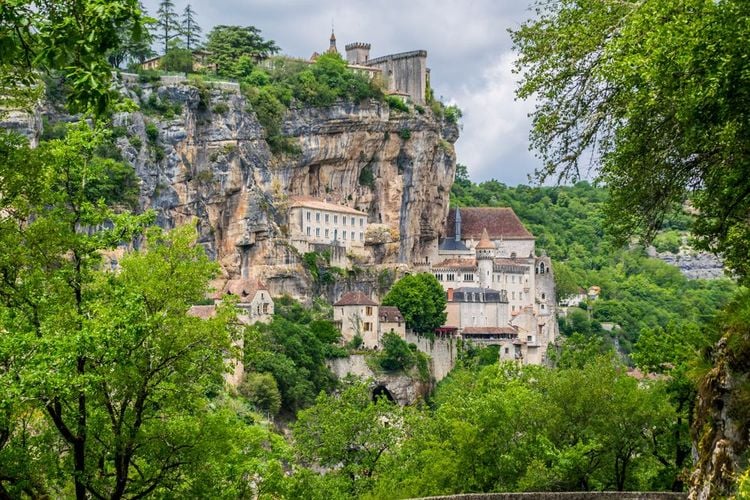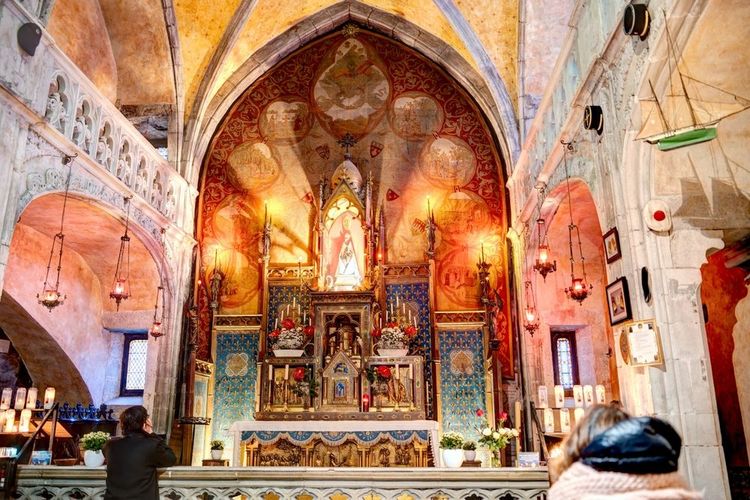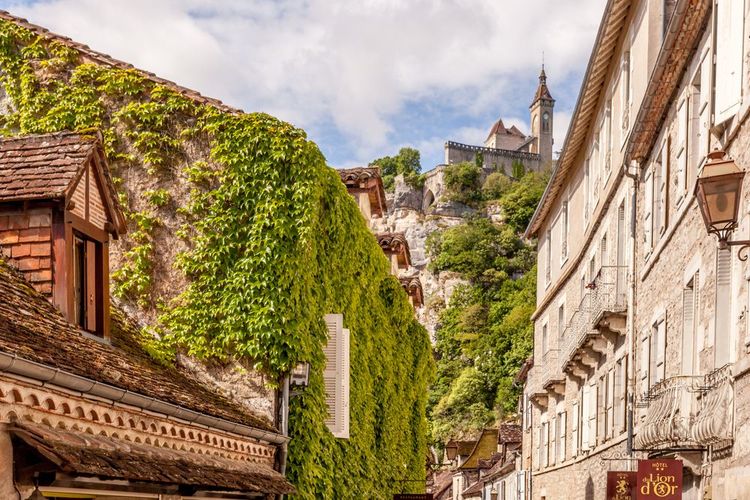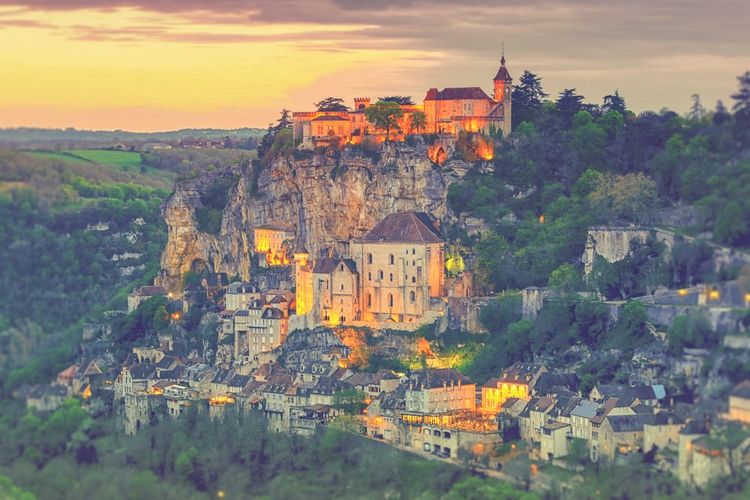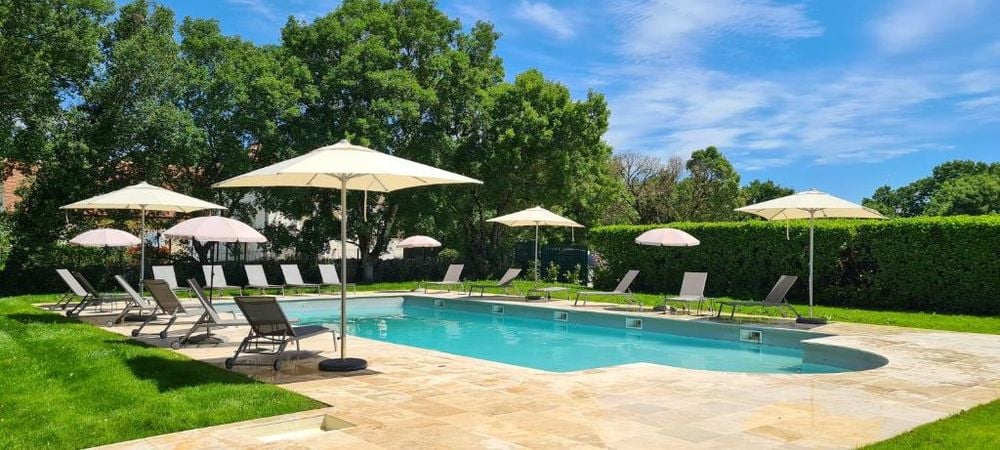Rocamadour has rather mysterious origins. The very ancient human habitat and the caves decorated with paintings bear witness to prehistoric life, and specialists point to the presence of a pre-Christian sanctuary. One legend even attributes the origin of the pilgrimage to Zacchaeus, whose body was supposedly found in a cave in Rocamadour. More plausible, but unsubstantiated, is the tradition that a hermit, Saint Amadour, spent many years in this place, which was known as the Val Ténébreux and which then changed its name.
What is certain is that, before the year 1000, people came here to pray to the Virgin Mary. The monks of Marcillac, then those of Tulle, provided the service. In the second half of the 12th century, the pilgrimage, which had been very modest until then, rapidly took on great importance.
Numerous miracles were performed there, so much so that a famous Book of Miracles was written around 1170. At the same time, the tiny oratory containing the statue of Our Lady had to be flanked by a vast basilica supported by a lower church (the crypt). Other chapels (Sainte-Anne, Saint-Blaise, Saint-Jean-Baptiste, Saint-Michel, and the former St Louis chapel, now called the Ovalie chapel) were built in this small space, which took on the appearance of a sacred precinct.
